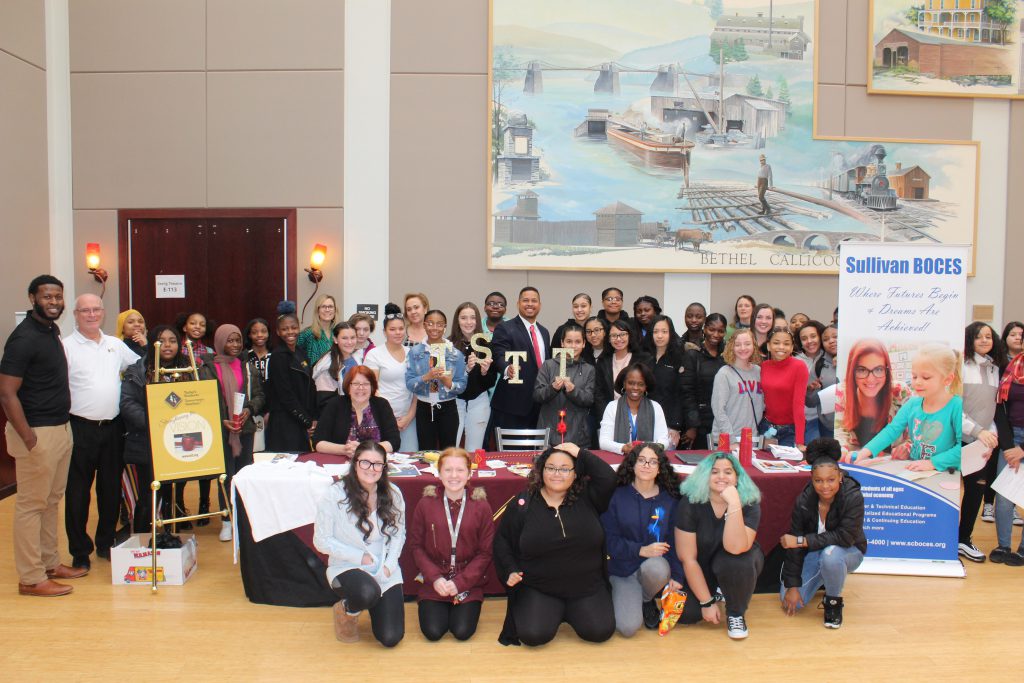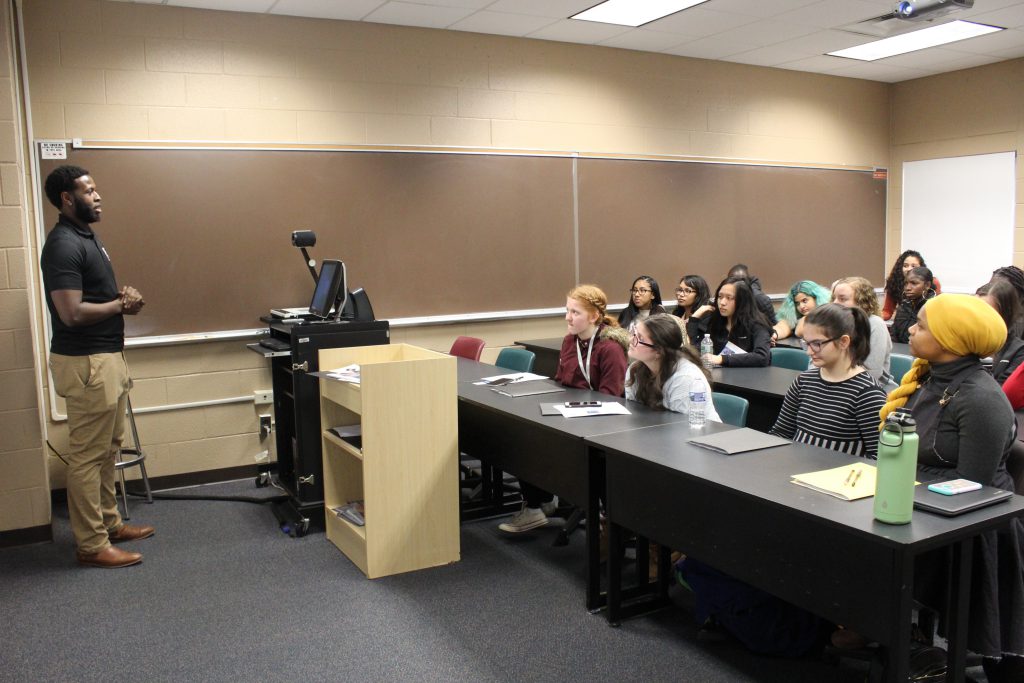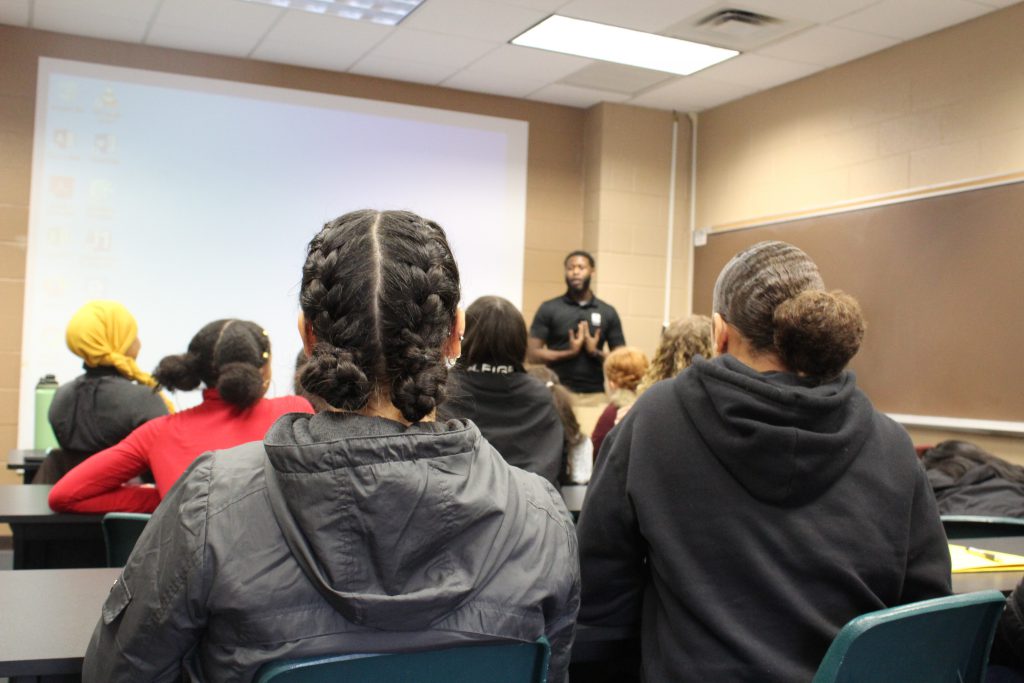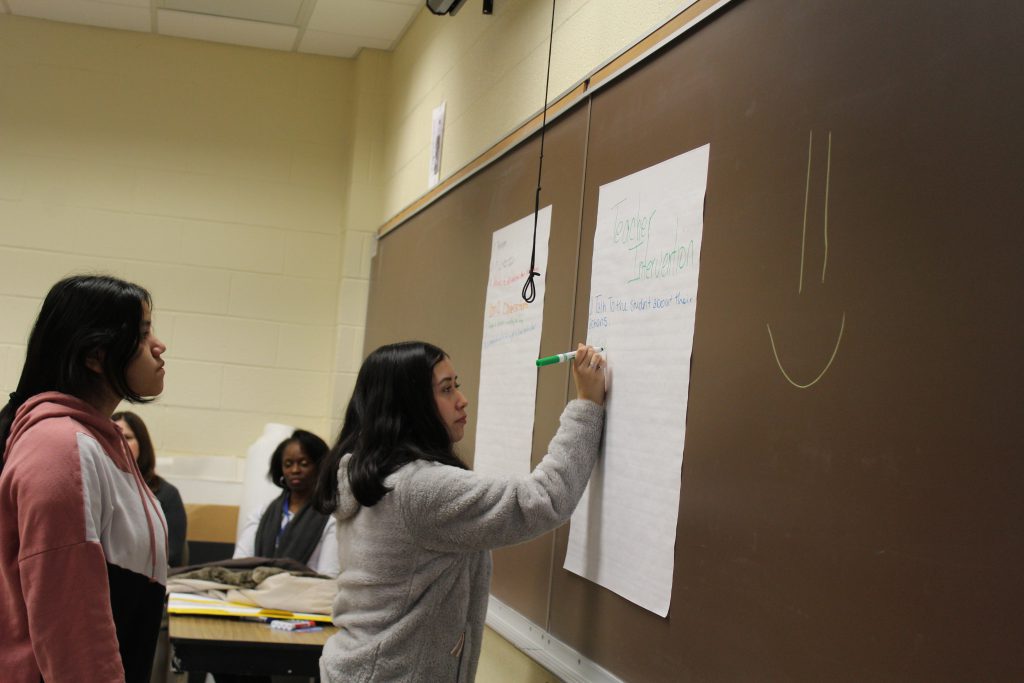
Any parent can tell you that there are no instruction manuals when it comes to children. Each child is born with a unique set of personalities, skills, strengths and challenges. The average parent will raise 2-3 children. The average teacher in New York state has 26.2 students in a classroom. The most effective teachers are able to inspire and engage a diverse array of needs and abilities, often simultaneously. It takes years of training to do this effectively, but students enrolled in the Today’s Students, Tomorrow’s Teachers (TSTT) will have a leg up when it comes to being successful in the classroom – before they even take their first college course.
Today’s Students, Tomorrow’s Teachers is a program that works to recruit, mentor and train culturally diverse and economically challenged students to become effective teachers and committed leaders.
“In response to the nationwide shortage of diversity in the educational workspace, programs like TSTT are an essential piece of ensuring culturally-responsive classrooms,” Monticello Central School District’s Executive Director of Special, Summer and After-School Programs Dana Taylor said.
Participants in the program receive support and professional development from eighth grade through high school and college and post-degree placement.

On Jan. 31, TSTT students from Monticello Central School District joined TSTT students from Ellenville, Fallsburg and Liberty for one such professional development opportunity – a Career Planning and Development Conference held at SUNY Sullivan. There, they had the opportunity to participate in workshops designed to help them successfully maneuver college, career planning, and down the road, a classroom of their own.
In one workshop, students debated the best way to intervene when a student displays problematic behavior. One participant suggested separating the student from the rest of the classroom. Another chimed in that that approach could make the student feel isolated and as if the teacher doesn’t like him or her. Yet another countered that the student could easily evade the feeling of isolation by following instructions and that consequences can prevent future poor behavior. Eventually a discussion emerged amongst the participants about how teachers can get just as frustrated as students do – a mature realization for a group of high school students.
 Down the hallway, a group of students learned about successfully navigating college life. Students in TSTT have the opportunity to receive a 50% minimum tuition scholarship from more than 20 colleges and universities. When these students enroll in college, many of them will be the first in their families to do so, so no detail is too small. The students discussed and learned about a variety of topics running the gamut from the importance of reviewing syllabi at the beginning of a semester, to tips on communal living, to curfews and quiet hours.
Down the hallway, a group of students learned about successfully navigating college life. Students in TSTT have the opportunity to receive a 50% minimum tuition scholarship from more than 20 colleges and universities. When these students enroll in college, many of them will be the first in their families to do so, so no detail is too small. The students discussed and learned about a variety of topics running the gamut from the importance of reviewing syllabi at the beginning of a semester, to tips on communal living, to curfews and quiet hours.

In yet another workshop, Lorraine Janove-Lopez, Chief Diversity Officer at SUNY Orange used a pizza analogy to help students understand the difference between equality and equity.
“Equality is bringing in a pizza and giving each student a slice,” she said. “Equity is bringing in a pizza and giving two slices to a kid who hasn’t eaten yet today, and maybe half a slice to a kid who says he just ate and isn’t very hungry.”
She went on to define the achievement gap, illustrating the critical work needed to bridge the gap and ensure that all teachers are able to educate each and every student.
“After all, why do you want to be a teacher?” she asked the students in front of her.
“I want to be an inspiration,” one student responded.
“I want to help kids and society,” another said.
“I want to make a difference in a child’s life,” said another.
